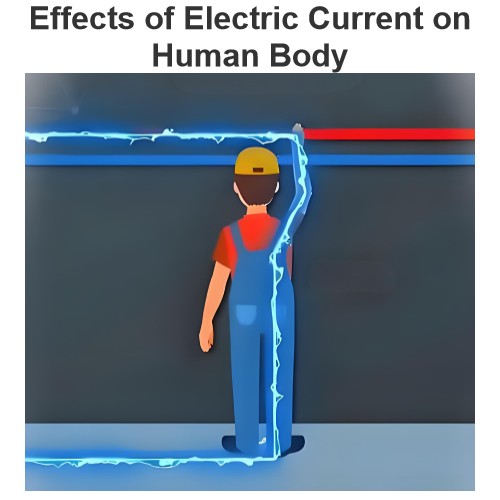What happens when there is an electric shock in a neutral wire?
Principles of electric shock
In a normal three-phase four-wire power supply system, the neutral wire (PEN wire or N wire) is grounded. Theoretically, the potential of the neutral wire is the same as that of the earth. When the three-phase load is balanced, there is almost no current flowing through the neutral wire. However, when a person touches the neutral wire and there is a fault in the neutral wire, an electric shock accident may occur.
Electric shock mainly occurs because there is current flowing through the human body. The degree of harm caused by electric shock to the human body is related to factors such as the magnitude and duration of the current passing through the human body and the path of the current. Generally, it is considered that when the power frequency current (50Hz or 60Hz) passing through the human body exceeds 10mA, it may make it impossible for a person to get rid of the power supply independently. When the current exceeds 30mA, it may lead to serious consequences such as cardiac fibrillation.
Neutral wire fault conditions that may lead to electric shock
Neutral wire breakage
When the neutral wire is broken, in the case of three-phase imbalance, the potential of the neutral wire after the break point will shift. For example, in a lighting circuit with three-phase four-wire system, if the neutral wire is broken at a certain place, due to the fact that the loads of each phase (such as lamps) cannot be completely the same, the current that originally returned to the power supply through the neutral wire cannot flow normally. At this time, taking the phase with more loads as an example, part of the current of this phase will form a loop through the loads and neutral wires of other phases, making the potential of the neutral wire no longer zero and may rise to a higher voltage. If a person touches this live neutral wire at this time, there will be current passing through the human body, resulting in electric shock.
Poor neutral wire contact
Poor contact at the connection point of the neutral wire and the equipment or at the neutral wire terminal in the distribution box is also very common. Poor contact will cause the resistance at this point to increase. According to Ohm's law U=IR , when there is current passing through, a voltage drop will occur at the point of poor contact. If this voltage drop is large enough to make the potential of the neutral wire deviate from the earth potential, when a person touches it, there will be current passing through and cause electric shock.
Neutral wire and phase wire short-circuit and then ground fault (a more complex situation):
This situation may cause the neutral wire to have a dangerous voltage. For example, inside an electrical equipment, a short circuit occurs between the neutral wire and the phase wire. The large current after the short circuit may cause the protection device to act. However, if the fault does not completely cut off the circuit, or due to the imperfect grounding system, a part of the short-circuit current will flow into the earth through the grounding device. At this time, the neutral wire may have a certain residual voltage. When a person touches the neutral wire, they will get an electric shock.
Manifestations of harm from electric shock
Electric shock injury
When current passes through the human body, it will cause direct electric shock damage to important organs such as the nervous system and heart. The human body will feel a tingling sensation. As the current increases, this feeling will become stronger and muscle spasms may occur. If the current lasts for a long time or the current is large, it will lead to respiratory paralysis and cardiac arrest. For example, when the current passing through the human body reaches several tens of milliamperes or more, it may cause ventricular fibrillation, which is a very dangerous arrhythmia that will make the heart unable to pump blood effectively and endanger life.
Electric burn
At the same time as a person gets an electric shock by touching the neutral wire, if an arc is generated at the contact point or the current generates heat inside the human body, an electric burn will occur. The degree of electric burn is related to factors such as the magnitude of the current, the contact time, and the human body resistance. Generally speaking, electric shock with high voltage and large current is more likely to cause severe electric burns. Electric burns not only damage the skin but may also cause deep injuries to subcutaneous tissues, muscles, and bones. For example, when a person touches the neutral wire with a relatively high voltage, the contact point may appear charred and carbonized, and the surrounding tissues will also appear redness, blisters and other conditions due to thermal damage.
The Electricity Encyclopedia is dedicated to accelerating the dissemination and application of electricity knowledge and adding impetus to the development and innovation of the electricity industry.













